Even if you don’t specifically seek out platforms talking about neurodivergence, two stories are running in parallel. On the one hand, more and more people across the generations are finding that experiences they’ve had all their lives might finally be explained by words like ADHD, Autism, and neurodivergence. They’re going down rabbit holes of research and self-education, connecting and meeting up, realising their traits in others and sharing the useful stuff they’ve learned.
The other story is… moral panic?? Throwing stereotypes on already shaky assumptions not unlike swamp mud on a Jenga tower, we’re seeing a steady number of sensationalist headlines like:
Oh no! ADHD is on the rise! It’s an epidemic!!
Not satisfied with being quirky or interesting, young people claim to be autistic for this new trend!!
Our fast-paced world is making everyone think they have ADHD!!
People craving to stay relevant for social media self-diagnose with an imaginary disorder!!
Adult ADHD is a myth, people are just lazy!
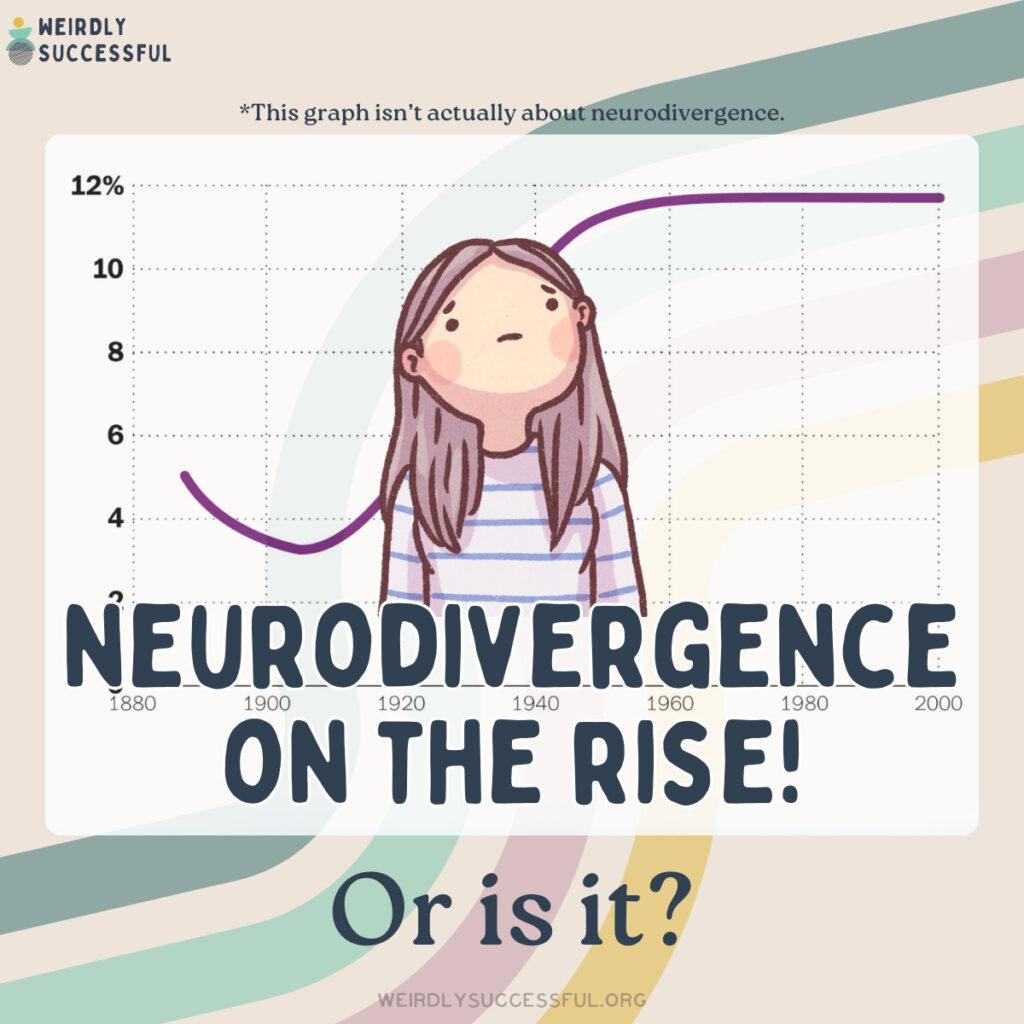
Sigh.
If these stories existed only in their isolated echo chambers, we could shrug and move elsewhere.
But with enough repetition, misinformation easily fills the void of the general population’s lack of information. The result is:
- otherwise well-meaning parents, overworked teachers and healthcare workers worried, confused and/or freaking out,
- not-well-meaning people getting validation for their ‘young people these days’ rants (even if those “young people” are in their 40s)
- actual neurodivergent people doubting and questioning their experience, even denying themselves the support and care they need
In fact, the tabloid statements are so muddled by now, that it’s hard to make out what the original claims are supposed to be.
Thankfully, if there’s one thing we love in both Autism and ADHD, that’s information clarity.
…and stories. And going off on tangents. And, sometimes, graphs.
So with the one three four things in mind, we’ll immediately go off on what might first seem like a detour which, in fact, will help us take a proper look at:
- whether ADHD and Autism are truly ‘on the rise’,
- what there actually is ‘more of’, and
- what’s actually going on making it seem like there are more neurodivergent people now than ever before in history.
5 reasons it seems there are more neurodivergent people now than before[Hide][Show]
- Flashback: The ‘overdiagnosis’ that never was
- What’s actually behind the ‘rise’ in ADHD & Autism
- #2: We have better words to describe things that were always there
- #3: The difficulty of navigating the world today puts the spotlight on neurodivergent traits (and not in a good way)
- #4: Privilege did a lot of heavy lifting for support needs in the past
- #5: Democratising media has acted as a massive amplifier for lived experience
- True inclusion creates more opportunities for people to dare to unmask
Flashback: The ‘overdiagnosis’ that never was
Do you know someone who suffers from the pathological behavioural disorder known as left-handedness?
You probably don’t. Instead, you probably know left-handed people. And that’s because now in 2025, we’ve had decades of research showing that left-handedness is a natural genetic variation. You know, one of those human things like whether your ears are pointy-elven-shaped or you can do that twirly thing with your tongue.
But if you only looked at the percentage of people “diagnosed” with left-handedness out of context, it would be easy to draw very different conclusions.
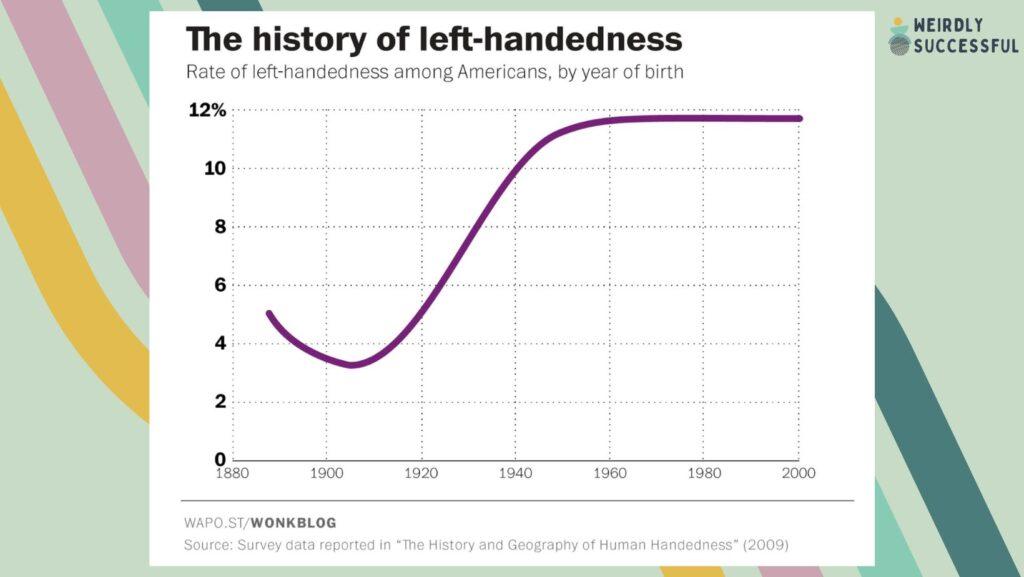
Was left-handedness a “new thing”? Was it a “youth trend”? Was there an “epidemic of overdiagnosis?”
Nope, none of those things. Instead, there was a decades-long cultural shift where:
- the medical establishment stopped thinking of left-handedness as a disorder,
- the moral panic around left-handedness faded,
- and teachers stopped hitting children with sticks for not writing with their right hand.
As a combined result, diagnoses did go up, skyrocketing even. But then they plateaued at around 12% – which is probably the naturally occurring percentage of the population. 1
What’s actually behind the ‘rise’ in ADHD & Autism
Now with that in mind, look at what’s going on with ADHD and Autism. Here’s some recent data from the US2 and the UK3:
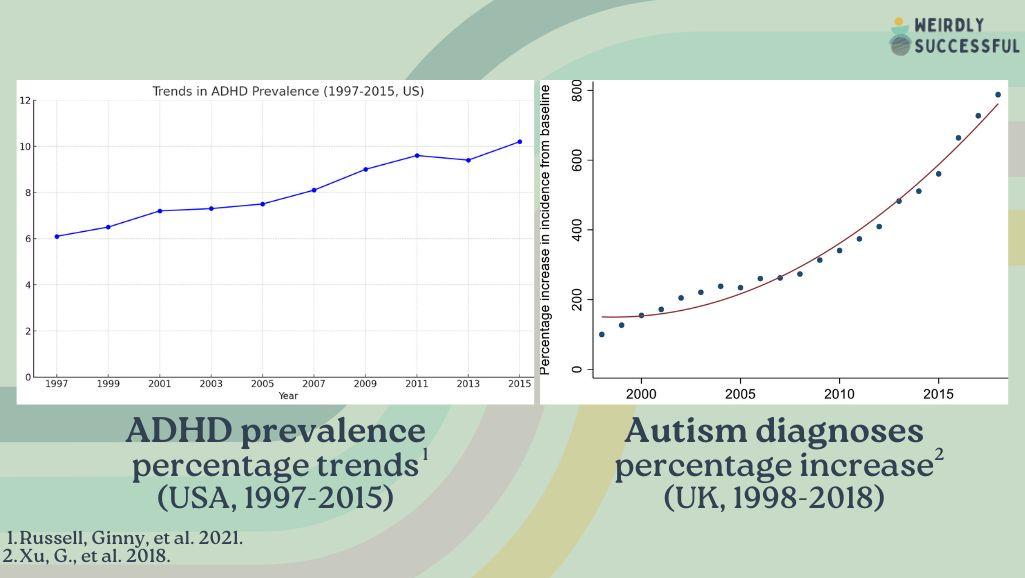
It doesn’t take a statistics degree to see that both charts are of the ‘number go up’ variety.
But does this tilt the scales more in favour of the ‘youth fad‘ or the ‘shift in understanding‘ explanation?
Well, let’s make sure we don’t run with assumptions or make the sort of statistical oopsie like saying that more people eating ice cream causes more shark attacks (the actual answer in that case is that ‘both happen more when people go to the beach’4).
We could say that the number of diagnosed ADHD & Autistic people going up for 25 years already rules out the ‘youth fad’ idea, let’s widen our scope and make note of the other ingredients:
- Decades of advances in neuroscience and genetics
- Tens of thousands of research papers published on ADHD5 and Autism6
- All the research resulting in evolving diagnostic criteria
- Generations of adults establishing self-representation & self-advocacy
- Widening access to information and self-screening with each generation of the internet
- Slowly improving media representation
- Lived experience feeding back to a wider awareness in the medical community
- Feedback improving medical training
- All of this adds to overall wider awareness in the public
Each of these elements has a positive effect on others, resulting in non-vicious cycles of awareness, advocacy and representation.
Looking at all of this together, it makes less and less sense that badly parented, attention-seeking, social media-trained teens are the catalyst behind the ‘sudden rise’ in neurodivergent people who apparently all just jumped out from behind a tree (boo! awareness!).
Instead, what we’re actually seeing is the rise in correct diagnoses of adult ADHD and Autism.
As for why the rise is exponential? Our working theory is a combination of:
- more and more people previously un- or misdiagnosed are now correctly identified as neurodivergent, and
- Several generations are catching up at the same time.
The bottom line is: this is nothing new. We’re already here. In fact, we’ve always been here. We just know better now.
And the best news? More diagnoses mean more people getting the support they needed all along.
So the next time someone spouts off some new conspiracy about how ADHD and Autism is ‘coming out of nowhere’, rest in the knowledge that we’ve been here before.
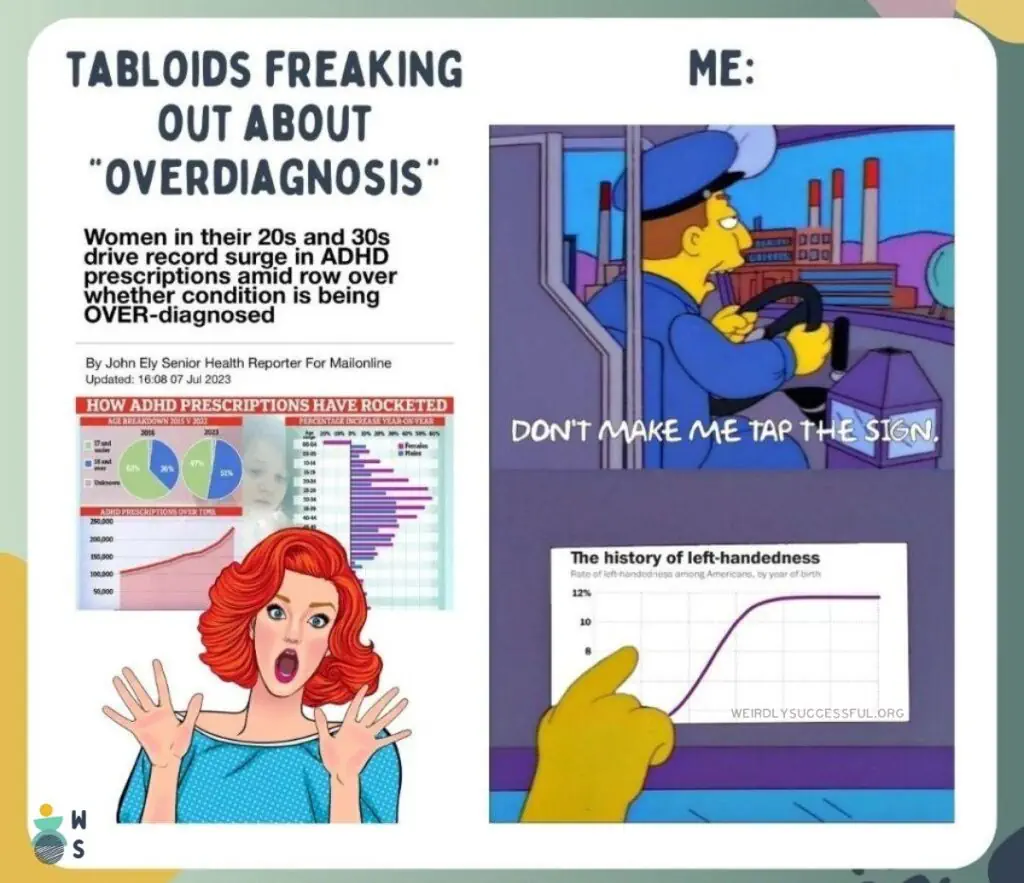
With that overview behind us, time to go down the rabbit hole and look at the details.
Below, you’ll find how some of the individual shifts listed above affect the overall changes in the long-overdue recognition of ADHD, Autism, and neurodivergence more generally.

#1: Diagnostic criteria are more accurate
For insomnia or nightmares, humanity had words to describe and definitions to talk about for millennia. When it comes to autism, ADHD, dyslexia and the rest, we’re talking about conditions with a lot of individual traits and quite complex definitions. Which, while improving, are still far from ideal.
So when people say ‘We didn’t used to have this many ADHD/Autistic people’, well of course. We can’t expect to find neurodivergent people with diagnoses if they are from a time when the words didn’t even exist.
Colloquial names have existed for various individual neurodivergent traits — usually the most visible ones. But Autism has only been properly studied since the beginning of the 20th century, and ADHD since mid-century. The first person to be diagnosed with Autism died only recently in 2023. 7
The older the diagnostic criteria, the fewer traits it includes, with worse definitions. With each decade we have an increasingly thorough understanding of these conditions. And that means better criteria, better definitions, and more people recognised — and recognising themselves — as neurodivergent.
Just some recent changes in ADHD’s diagnostic definitions
- Before 1994, Adult ADHD (‘adult’ meaning people aged 17 years and older) wasn’t even included in the most widely used diagnostic manual, the DSM.
- The UK’s clinical practice guidance body, NICE, only officially recognised by Adult ADHD in 2008.
- Before 2013, if someone had an ADHD diagnosis, they couldn’t be diagnosed as Autistic. And people diagnosed Autistic weren’t eligible for an ADHD diagnosis. Now we know that there’s a massive overlap in the two conditions, somewhere around 50-70%. Meaning 50-70% of Autistic Adults are also ADHDers.
- 2017 was the first time the relationship between hormone systems and ADHD was finally studied. And NICE’s 2018 guideline update was the first time the under-recognition of girls and women was mentioned as a major issue. 8
In practice, this means that just in the last ten years, we learned that people who present more Autistic than ADHD, as well as ADHD people with periods, have a high chance of going undiagnosed.
And just 30 years ago, you would’ve been disqualified from an ADHD diagnosis for being an adult. (Which, when we last checked, is most people.)
So while more people are getting diagnosed, that’s because fewer people go undiagnosed.
And we’ve still got a long way to go. Diagnostic criteria still aren’t granular enough. Many of the definitions are out of date. And trait descriptions often don’t reflect how people actually experience them.
Not only that, social attitudes, cultural expectations and gender stereotypes mean that the experiences of millions of ADHD folks still routinely get overlooked or misdiagnosed either because they have periods (so it’s “just moods” or “just PMS”) or because their traits don’t fit the stereotypes.
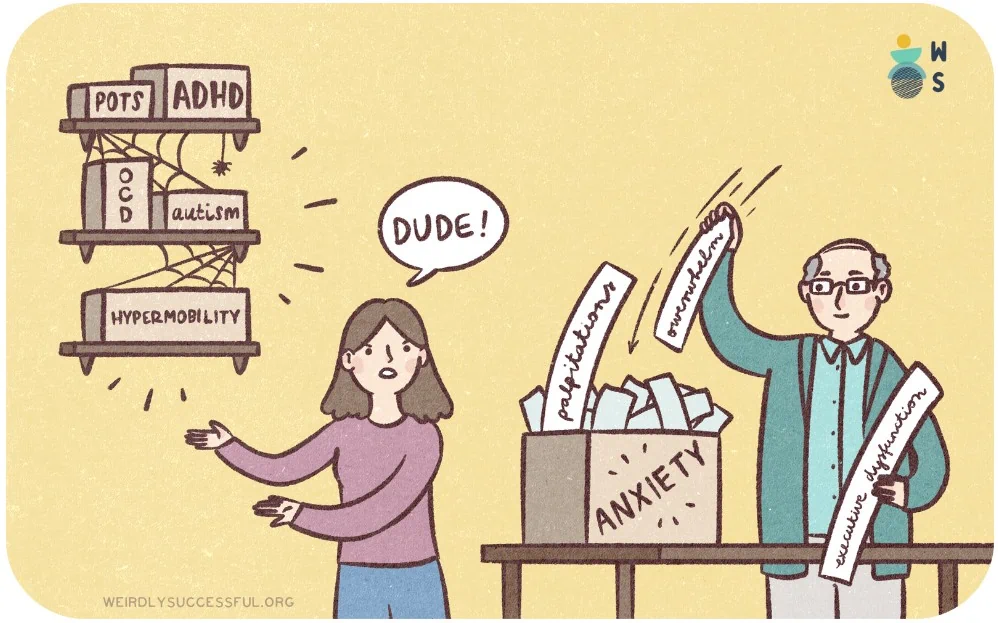
Given all that, where might our diagnosis chart top out? There are guesses and calculations, but one thing is certain:
Diagnostic percentages will continue to go up until they’re much more representative of the true size of the neurodivergent population.

#2: We have better words to describe things that were always there
“In my day, we didn’t have autistics!!”
It might not have been called “autism”, “ADHD” or “neurodivergence”, but people like us have always existed.
Trends were coming and going when it came to difference and diversity. Many historical societies had career options more suited to neurodivergent traits and needs (philosopher, druid, scribe, oracle, natural philosopher, alchemist, the list goes on). We even know of historical cultural contexts where ‘fools’ were seen as precious, and caring for them a privilege. 9
Then the waves of enlightenment, religious fundamentalism and capitalism each brought their restructurings of cultural norms. Gradually, more and more kinds of differences were pushed to the fringes of society.
Cue the rise of the labels like odd, weird, kooky, scatterbrained, mad genius, village idiot or space cadet — each denoting people barely useful to society, if at all. Sure, derogatory labels always existed. But these remain as go-to labels to this day.
And what happened to you due to your label would then come down to the social attitudes of the day.
- Attitudes in the West towards people deeply interested in specialist subjects like botany, the movement of the stars, or trains, have historically tended to be more forgiving if one happened to be born white, rich, and/or a man. Special skills and knowledge exploitable for the use of those in power would also often get you points.
- Many of those who were none of the above (and even if all of the above) would have been the ones laughed at, bullied, or witch-hunted – literally. The story is similar to those experiencing what we’d today file under mental health conditions. Families would have kept these neurodivergent ancestors hidden, ostracised, ignored, dismissed, institutionalised, or worse.
- Some of our more recent neurodivergent ancestors would become the fun uncles, brilliant aunts, creative scientists, and outside-the-box thinkers. True, they wouldn’t be labelled as neurodivergent (the words didn’t exist yet), but they were definitely there. ‘Oh, he’s like that sometimes‘ is a phrase still common for family members who turn out to have been neurodivergent. ‘yeah, she’s a bit weird but we all do that in this family‘ often turns out refers to neurodivergent traits that run in families. Just put in a different box.
So when today we think that neurodivergence is a recent invention, it’s just the classification of traits that has changed. Scratch at the surface and you’ll find entire histories of families and social groups with their own take on which specific kinds of difference will be excluded, or ‘normal enough’ to be tolerated.
The big difference with the neurodivergence movement of today is that we are consciously moving towards better visibility, and we advocate for widening acceptance and accommodation of traits — regardless of leftover historical labelling.

#3: The difficulty of navigating the world today puts the spotlight on neurodivergent traits (and not in a good way)
The last half-century brought huge changes to how we work, socialize and exist in the world — especially in the Global North.
In order to survive and make ends meet, huge swathes of people today are required to:
- exist in noisy, busy environments
- endure, process and act on huge amounts of information, news, and alerts
- be always ready to act quickly on workplace requests, prioritising work output above all other needs
- perpetually manage planning, finances, social signalling, education, debt repayments, home admin, family management, and so on
- be able to individualy manage any aspect of life that in other social configurations were spread across multiple people
Existing outside of these requirements is becoming a privilege few can afford.
Clearly, this list alone is already a lot for anyone.
And we can safely double the energy requirements for each of the categories above where a neurodivergent trait makes navigating that area just that much more difficult.
So even if the small and large systems of society don’t actively or deliberately want to harm or neglect neurodivergent people, they inadvertently still do. And without accommodations and support in place, that puts neurodivergent people at a separate disadvantage at each point of difference.
Add it all together and you find that many Autistic and ADHD presentations recognised today as bothersome, irritating or unwanted are not core traits, but neurodivergent reactions to unmet needs and signs of distress.
Worse, the less supportive an environment is, the higher the level of distress experienced by people whose support needs are denied.
So, ironically, one big reason neurodivergence is more visible today is because of how distressing it is for neurodivergent people to live in this world.

#4: Privilege did a lot of heavy lifting for support needs in the past
Henry David Thoreau continues to inspire generations upon generations of lifehack bros as the epitome of I can do it all on my own, live a minimalist life & be one with nature.
Which is cool and everything. But in order to write the very book where he sets this lifestyle out, Thoreau’s wife and sister made and delivered homecooked meals to him every single day. And they did his laundry. And his cleaning. As for the legendary cabin, he lived in it rent-free on a friend’s estate.
I’d love to be this kind of ‘independent’ living the ‘simple life’, nothing else to do but let myself be swallowed in my interest-du-jour. I would feel safe knowing that all my other obligations will be taken care of, including my housing, feeding and clothing.
Not saying that every brilliant rich white man in history was neurodivergent.
Not even saying Thoreau was. (Historical diagnoses are problematic, anyway.)
What I am saying, though, is that from the outside, a person who is not required to do mundane, day-to-day tasks and household management on their own looks eerily similar to a person who is unable to do them alone.
Just like today, social environments, status, privilege, opportunities and support systems have a huge impact on how someone’s neurodivergent traits manifest and are perceived.
So if someone you know points out the apparent lack of historical neurodivergence, kindly direct them to consider the amount of work done for those celebrated as shining examples of bootstrapping and self-sufficiency.
Neurodivergent folk who didn’t have support systems in place still existed — they just didn’t have the opportunity to write memoirs, create art, or focus on anything else other than survival.

#5: Democratising media has acted as a massive amplifier for lived experience
If an experience of something is never talked about, it’s easy to believe that it doesn’t exist, or isn’t important enough.
And if we then happen to have that experience, the most logical thing to conclude is that ‘it must just be me’.
Even though we’ve had broadcast media for more than a hundred years, it’s never been a cakewalk to see oneself represented. Especially as traditional top-down media has always been gatekept — community leaders, publishers, production companies, executive producers, news desk editors, and so on and so forth.
The fact that the concept of ‘neurodivergent self-representation’ is relatively new is a consequence of gatekeeping.
Sure, once terms like autism became more known, there has been an interest in exploring what it is. But the resulting cultural touchpoints, like 1988’s Rain Man, provide a debatable balance between raising awareness and muddling things even further. To this day, media representation of neurodivergence remains heavily skewed and stereotyped, decades behind the movements advocating for self-representation in mass media.
The unprecedented democratisation of technology is changing that rapidly.
What we see now is the manifestation of a shift towards the concept that Temple Grandin, the first self-representing autistic person described as “Nothing About Us Without Us”.
Back in the early 2000s, getting self-representative media out into the world was notoriously difficult unless you had coding skills to create your own website. We take it for a fact today, but it’s somewhat of a miracle that just twenty years later, literally billions of people have access to a single device equipped with a complete audiovisual production and worldwide broadcast toolset.
Now, a substantially larger amount of people from all walks of life can create, record and publish their own stories, experiences and points of view, sharing their wisdom, humour and insights without direct gatekeeping. No wonder you hear from and about marginalized voices more than ever before.
As a result, it’s easier than ever to find people like you.
It’s become more accessible to learn about the everyday experiences of adult ADHD, and what was it like to live without support as an unidentified Autistic person. It’s easier to find community in sharing the joys, hardships and funny parts of neurodivergence.
And this is a good thing because representing ourselves as a community is the best way to combat misinformation and stereotypes. (Plus the more of us connect, the more we can share the burden of representation.)
Beware of those who preach awareness without action!
We can’t know where we are on that big statistical incline upward.
The positive cycles of widening awareness new knowledge integration have been going on for more than three decades. It’s safe to say they will continue throughout our lifetime and beyond.
A big danger to these cycles of change though is a misinformed sense of false victory.
Many initiatives have been jumping on the ‘raise awareness’ train, most often:
- driven by neurotypicals,
- for neurotypicals,
- getting minimal or no input from neurodivergent people,
- often tokenising neurodivergent voices,
- reiterating outdated ideas about neurodivergence,
- congratulated and awarded by other neurotypicals for doing so,
- and therefore leaving the systems unchanged,
- while doing little, if anything, for the community.
A bit like that Sailor Moon meme.
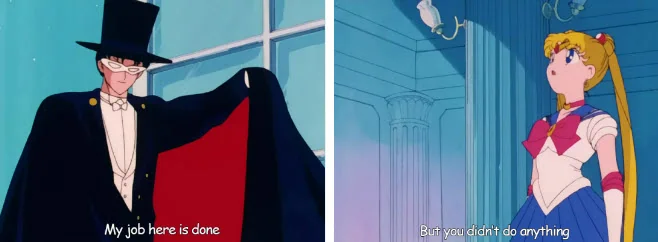
Does this awareness initiative pass the pigeon test?
Our neurodivergence doesn’t exist for others to get badges for being able to point us out in a crowd. (We already had that during the witch-hunty days.)
It’s no support at all when organisations and people in positions of power begrudgingly acknowledge folks who are ‘fidgety to an acceptable level’ or whose ‘distress doesn’t rise above a level that would make neurotypicals uncomfortable’. That’s less than the bare minimum.
This kind of conduct borrows the terms of neurodivergence just to set more specific bars of entry for us, while not changing anything to create a supportive environment for all of us.
So you’re 100% correct to feel suspicious when someone’s ‘awareness’ means that:
- you need to support their ‘normal’, and/or
- you need to double down on masking or otherwise suppressing your needs ‘in return’ for their ‘awareness’ of you.
You’ll probably know this feeling already, as so many of us neurodivergent adults have gone through life with these being asked of us all the time.
It’s a bit like if an organisation of pigeons was claiming to be the champions to aquatic creatures — as long as no pigeon is required to provide water or forced to listen to the disruptive noises of fin-flapping or struggling-to-breathe.
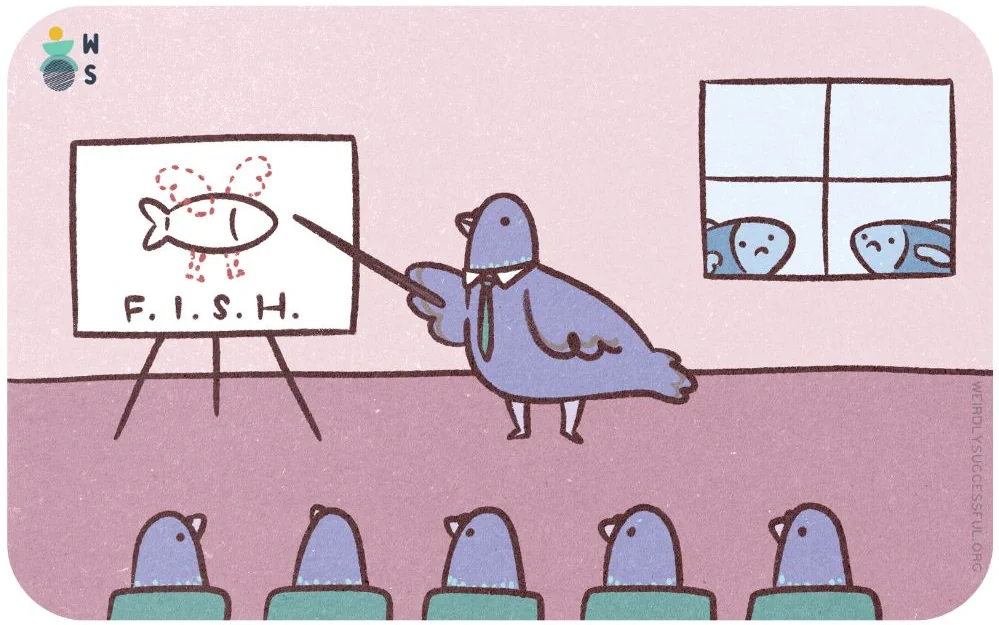
Then, after the seminar, emboldened by their newfound awareness, the pigeons can turn to the fish and say:
Be the kind of fish that can walk and live outside of water, mmm’kay? We reserve our inclusion for you guys only. Those other kinds can stay wherever they are until they learn to behave. But we love and support the fish. Happy Fish Awareness Month! You guys are so brave and inspirational.
The bottom line is that for any system that hasn’t been historically set up to be inclusive of neurodivergence, awareness is just the first step.
The real goal is for systems to become neuroaffirming. And to do that, they have to go beyond being generally aware. They also are inclusive, accepting, and open to dismantling harmful beliefs, outdated expectations and patronizing attitudes.
So when you’re evaluating whether to trust a source about neurodivergence, a good way to orient yourself is by looking at whether they acknowledge, or even understand that:
- ‘awareness’ is not a one-and-done checkbox
- the work of inclusion and affirmation is far from over
- both learning and implementation have to remain dynamic and ongoing
- and no change can be imposed top-down, without true dialogue.

True inclusion creates more opportunities for people to dare to unmask
All of the factors above have been contributing to higher awareness of adult ADHD, autism, and neurodivergence more generally.
And social attitudes have been slowly but surely shifting towards acceptance.
Generation by generation, we see less shame, less self-censorship, and gradual normalisation of neurodivergent traits.
And how do we know if a space is more accepting and inclusive of neurodivergence? It’s that more of us neurodivergent folks feel safe to show up as we are, expressing our true neurodivergent selves. (This website included. Hi! Glad you’re here.)
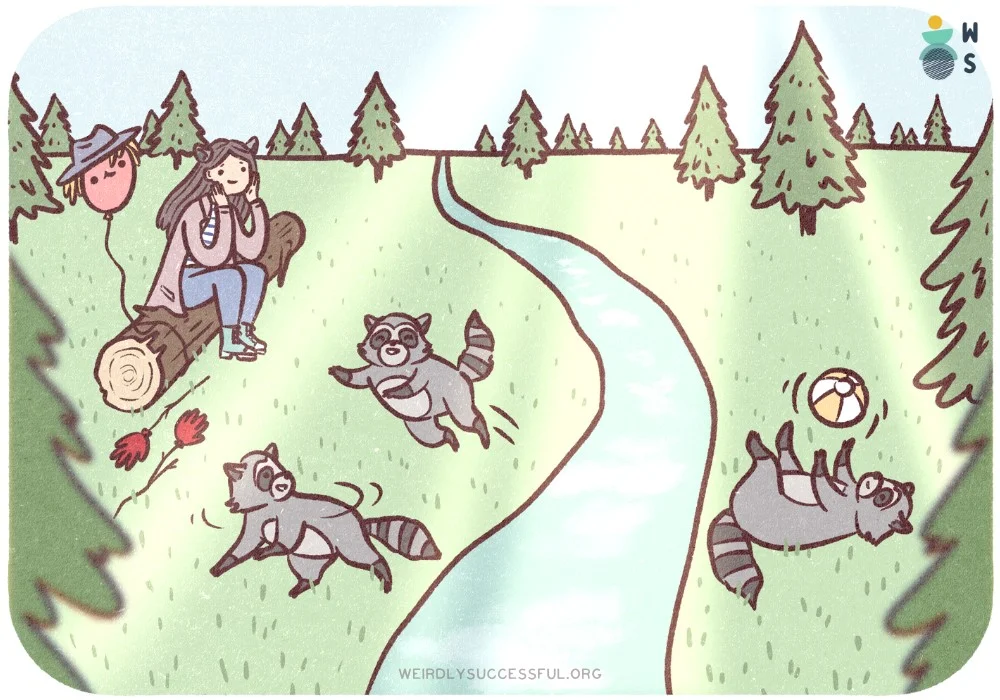
What was your shift?
For most neurodivergent adults we’ve talked to, there was always a tiny inciting incident that reframed our whole life. Shone a light through our self-beliefs, gave a name to our experiences, led us down a rabbit hole of research — to find clarity, support and maybe even community.
For some, it might have been their child’s diagnosis. Or a friend’s. Or a random TikTok, a YouTube video, a blog post, a celebrity talking about their own experience, a book, or a TV show with real representation.
Yes, patronizing and ableist attitudes are still common. But the amount of unmasked neurodivergent folks more than before is a miracle and something to be joyful about.
The path ahead is long. But the fact that there are more visibly neurodivergent people out and about in the real world than ever — living their lives, happily stimming away and simply existing — is in itself a reason to celebrate.
And all this is thanks to the tireless work done by neurodivergent advocates, educators, parents, content creators, healthcare workers, researchers, therapists and so many others who actually work towards affirming support, inclusion and acceptance.
Look at how far we’ve already come.
Imagine what we will achieve going forward.
Now it’s your turn!
What was your a-ha moment that made you realise there’s a lot more neurodivergence around than you used to think? And when did you figure out you’re a part of it all? Pop it in the comments below!

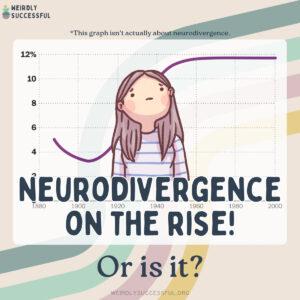
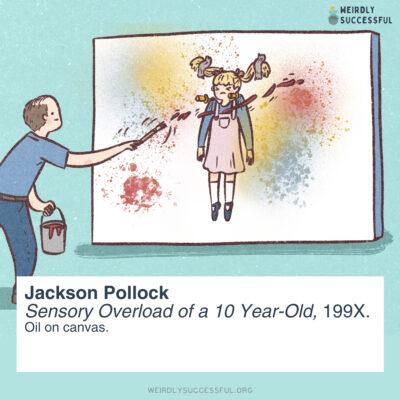
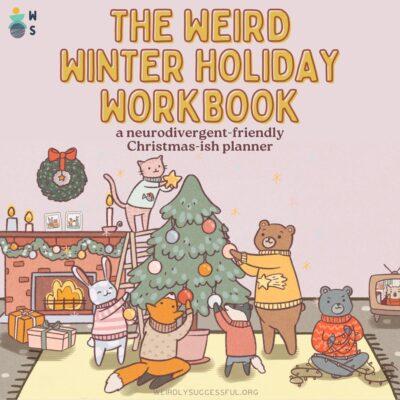
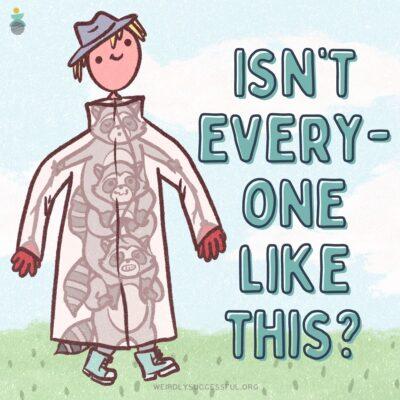


 The Weird Winter Holiday Workbook – a neurodivergent-friendly Christmas-ish planner
The Weird Winter Holiday Workbook – a neurodivergent-friendly Christmas-ish planner
Leave a Reply